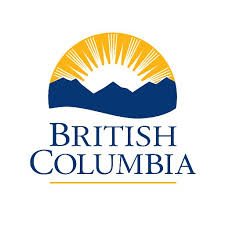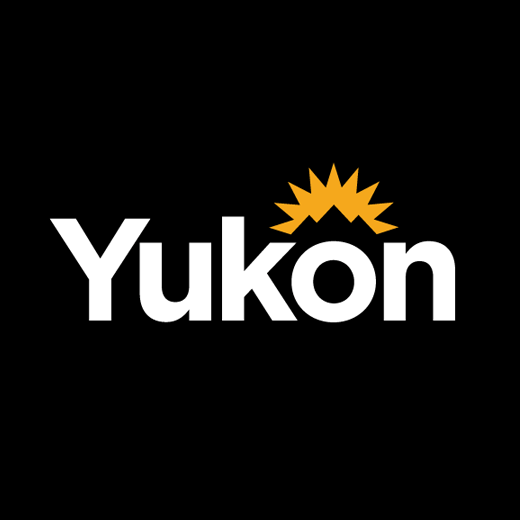fire
Type of resources
Available actions
Topics
Keywords
Contact for the resource
Provided by
Years
Formats
Representation types
Update frequencies
status
Service types
-

First Responders identifies the location of ambulance, fire, police and coast guard facilities in British Columbia.
-

The Weather Stations dataset is derived from the Regional Weather Information System (RWIS). For more information about each weather station, refer to [https://rwis.gov.yk.ca/stations/](https://rwis.gov.yk.ca/stations/) . Currently only weather stations owned by Yukon Wildland Fire Management, Park s Canada, Environment and Yukon Avalanche Association are included in this dataset. Other weather stations will be added as they become available. Distributed from [GeoYukon](https://yukon.ca/geoyukon) by the [Government of Yukon](https://yukon.ca/maps) . Discover more digital map data and interactive maps from Yukon's digital map data collection. For more information: [geomatics.help@yukon.ca](mailto:geomatics.help@yukon.ca)
-

The Yukon Geological Survey (YGS) has compiled over 195 surficial geology maps into a standardized GIS format, providing approximately 80% coverage of the territory. The maps range in scales from 1:250,000 to 1:10,000 with spatial overlap between scales. The original maps were produced by various agencies, including the Geological Survey of Canada, YGS, Yukon Government, universities, and the City of Whitehorse. All original feature descriptions have been preserved and also converted to standardized values using the Yukon terrain classification system. The compilation includes 4 GIS datasets and supporting documents available for download via [YGS integrated data system](https://data.geology.gov.yk.ca/Compilation/33) (YGSIDS) or GeoYukon. A .lyr file is [provided](https://data.geology.gov.yk.ca/Compilation/33) to symbolize feature classes and differentiate overlapping maps at different scales. Additionally, there is a surficial geology map index. The polygon attributes captured include surficial material, texture, age, surface expression, and geomorphological processes. Line features include geological contacts, glacial limits, glacial landforms (cirques, arêtes, eskers, meltwater channels, moraines), and non-glacial landforms (faults, lineaments, landslides, escarpments). Point features include field station, fossil and sample locations, glacial landforms (erratics, kames, kettles, drumlins, flutings), permafrost features (pingos, palsas, patterned ground, thermokarst depressions), and other non-glacial landforms (landslides, tors). The map index provides information on each map publication such as author, map title, map scale, publisher. These data are valuable for land-use applications in the territory, including: mineral and placer exploration, geotechnical engineering, infrastructure planning, granular resource assessments, permafrost modeling, agricultural assessments, forest management, and biophysical or ecological land classification. Distributed from [GeoYukon](https://yukon.ca/geoyukon) by the [Government of Yukon](https://yukon.ca/maps) . Discover more digital map data and interactive maps from Yukon's digital map data collection. For more information: [geomatics.help@yukon.ca](mailto:geomatics.help@yukon.ca)
-

The Fire Response Boundary layer defines the geographic area for the primary providers of response services. This layer is used by the ECRF (Emergency Call Routing Function) to perform a geographic query to determine which Emergency Service Providers are responsible for providing service to a location in the event a selective transfer is desired, to direct an Emergency Incident Data Document to a secondary PSAP (Public Safety Answering Point) for dispatch, or to display the responsible agencies at the PSAP. In addition, Emergency Services Boundaries are used by PSAPs to identify the appropriate entities / first responders to be dispatched. Data was modeled using the NENA NG9-1-1 GIS Data Template (NENA-REF-006. 2 -202 2 ). Distributed from [GeoYukon](https://yukon.ca/geoyukon) by the [Government of Yukon](https://yukon.ca/maps) . Discover more digital map data and interactive maps from Yukon's digital map data collection. For more information: [geomatics.help@yukon.ca](mailto:geomatics.help@yukon.ca)
-

Fire management zones help guide how wildfires are prioritized and managed and show where wildfires may be used to achieve ecological objectives. Zones are based on relatively constant factors, such as the level of human use or development and the presence of reliable fuel breaks. Distributed from [GeoYukon](https://yukon.ca/geoyukon) by the [Government of Yukon](https://yukon.ca/maps) . Discover more digital map data and interactive maps from Yukon's digital map data collection. For more information: [geomatics.help@yukon.ca](mailto:geomatics.help@yukon.ca)
-

Feature layer showing current municipal burning restrictions in Manitoba. This feature layer shows the current municipal burning restrictions in Manitoba. Fields included ( Alias (Field Name): Field description.) OBJECTID (OBJECTID): Sequential unique whole numbers that are automatically generated. Municipality (Municipality): Legal name of the municipality Mutual Aid District (Mutual_Aid_District): Name of the mutual aid district. The Mutual Aid System is a no-charge, reciprocal system of emergency response and assistance that towns, villages and municipalities in southern Manitoba can access through their local fire departments. For more information about mutual aid districts, please refer to the Office of the Fire Commissioner website. Telephone (Telephone): Phone number for the municipal office. Email (Email): Email address for the municipal office. Restrictions Flag (Restrictions_Flag): Number indicating the presence or absence of municipal burning restrictions where 1 = "Burning Restrictions" and 0 = "No Restrictions". Current Restrictions (Current _Restrictions): Description of the burning restriction notice. The Office of the Fire Commissioner (OFC) asks all municipalities to inform the OFC immediately at firecomm@gov.mb.ca when implementing or changing the status of municipal burning restrictions during times of high fire danger conditions. Contact the OFC if you have questions about the municipal burning restrictions: by email at firecomm@gov.mb.ca by phone at 204-945-3322 (toll free 1-800-282-8069)Contact the appropriate municipal office if you have questions about restrictions in specific municipalities.
-
Created for distribution by the GeoYukon application as a comprehensive resource for all publicly available Administrative Boundaries information in the Government of Yukon. This data may be used directly by other applications to dynamically display Yukon data; however, it may be subject to change as data sets are updated or added.
-

Attack bases are locations where fire response is delivered from. Distributed from [GeoYukon](https://yukon.ca/geoyukon) by the [Government of Yukon](https://yukon.ca/maps) . Discover more digital map data and interactive maps from Yukon's digital map data collection. For more information: [geomatics.help@yukon.ca](mailto:geomatics.help@yukon.ca)
-

This is point GIS coverage consisting of either fire ignition locations or centroids of fire polygons where the exact location of fire ignition were unknown for fires within the Yukon, spanning a period from 1946 to present. Although the temporal scale of the coverage goes back to late 1940's, Yukon-wide fire detection capability was not fully developed until the 1960's. In addition to this, access to regular aerial mapping was not readily available until that same time period. As a result many fires in the 40's and 50's were simply not recorded or poorly mapped, particularly in the north. For that reason, care must be taken when drawing conclusions from these data as it relates to the early years. Starting 2020 on the data was automatically updated using iFMS. Distributed from [GeoYukon](https://yukon.ca/geoyukon) by the [Government of Yukon](https://yukon.ca/maps) . Discover more digital map data and interactive maps from Yukon's digital map data collection. For more information: [geomatics.help@yukon.ca](mailto:geomatics.help@yukon.ca)
-

This is a landscape level GIS coverage of large fires within the Yukon, spanning a period from 1946 to present. Original polygon size was limited to 200 hectares, when the first edition of this dataset was completed in 1997. Smaller fires are now being included, especially near communities. It is important to note that in most instances, fire perimeters only were mapped. This means that unburned areas within the perimeter are not accounted for, either in an ecological context or in annual area burned summaries. More recent fires mapped, with the aid of satellite technology may include large unburned patches.Although the temporal scale of the coverage goes back to late 1940's, Yukon-wide fire detection capability was not fully developed until the 1960's. In addition to this, access to regular aerial mapping was not readily available until that same time period. As a result many fires in the 40's and 50's were simply not recorded or poorly mapped, particularly in the north. For that reason, care must be taken when drawing conclusions from these data as it relates to the early years. Distributed from [GeoYukon](https://yukon.ca/geoyukon) by the [Government of Yukon](https://yukon.ca/maps) . Discover more digital map data and interactive maps from Yukon's digital map data collection. For more information: [geomatics.help@yukon.ca](mailto:geomatics.help@yukon.ca)
 Arctic SDI catalogue
Arctic SDI catalogue